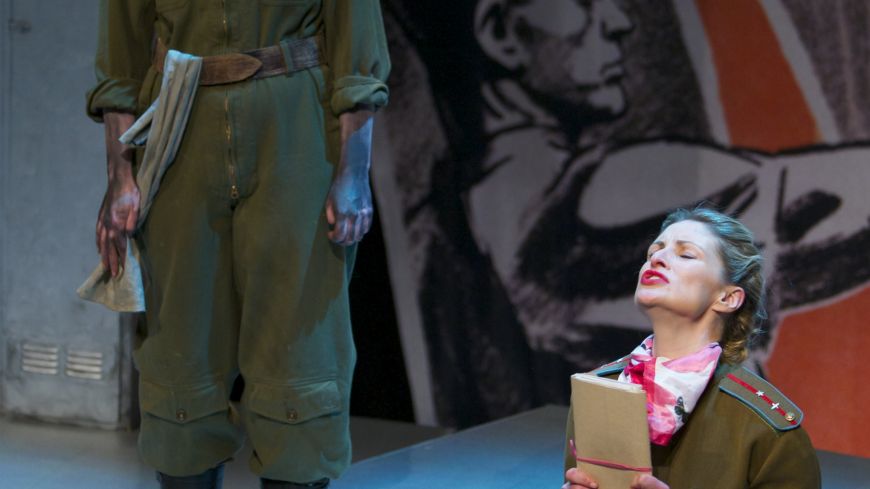
It was a chance find in Milngavie Library of the book about Russia’s women pilots, Night Witches by Bruce Myles, that inspired Glasgow writer Peter Arnott to pen his 1985 tribute to one of these formidable women, Lily Litvak.
Litvak was a fighter pilot in the Soviet Air Force during WWII. She trained in an all-female fighter unit before being transferred to the ‘boys’ flying club’ of an all- male unit. She was known as the White Rose of Stalingrad because of the flowers she had painted on the side of her plane for every Nazi plane she shot down.
Arnott’s play focusses on the relationships between Litvak (Lesley Harcourt) and flying ace Squadron Leader Alexei Solomatin (Robert Jack) and her female engineer colleague Ina Pasportnikova (Alison O’Donnell) at the time of the pivotal battle of Stalingrad.
Through a mix of dialogue and narration by each character, we learn that the war of the sexes is as fierce as the war between the Soviets and the Nazis. Although the eponymous Litvak features throughout, it is the sometimes didactic voice of a clear sighted Ina that gives a stronger message and is most rooted in reality. Her words speak loudly that it is the few who become princesses, in Litvak’s case a ‘princess of the air’, and that most women have more pragmatic struggles of being undermined and at times invisible.
Litvak dyed her hair and altered her uniform to a bespoke fit, retaining a very feminine look, but was ‘a pilot first’. The plea for sorority from Ina, who was just trying to get on with her job in her baggy overalls, to join her fight for female justice in a male environment was met with the answer that she did not want to be ‘fighting two wars at once’.
Edward Lipscomb’s set design with its inspirational workers’ poster with stylised red planes and trucks and, of course, the hammer and sickle, in the background had its atmosphere augmented by some rousing Soviet music at the start. The grey metal lockers, that also managed to look like the faceless monolithic tower blocks associated with Eastern Europe, turned cleverly to two narrow cots in the women’s hut. Sandbags round the stage lights were a subtle touch.
Much of the delivery of long statistics at the start could have been done visually to better effect as the video design from Tim Reid, using the lockers as a backs screen, was impressive.
The play is quite long and feels like it had too much telling and not enough showing. It is a bit stagey and unconvincing in the first act, but tightens up and becomes more arresting in the second act.
The actors used their own Scots accents, with no cod Russian. The only other nationality in the play was the German officer shot down by Litvak. Robert Jack, who primarily played Alexei Solomatin, also played the other male parts, slipping to each accent with ease. This scene involved differentiating the languages, so a German/English was used by Jack which worked. The German/Russian translation by Ina in Scots English was a well accomplished and funny piece of writing. Arnott has voiced the complexities of gender dilemmas through the female characters with insight and sensitivity within his ambitious and epic canvas.
This play, under the smooth direction of Richard Baron, is a fitting and timeous spotlight on yet more forgotten women whose important roles in life and history have been redacted.
Show times
Wednesday 13 - Saturday 16 March 7.30pm; Saturday 16 March 2.30pm
End of run

